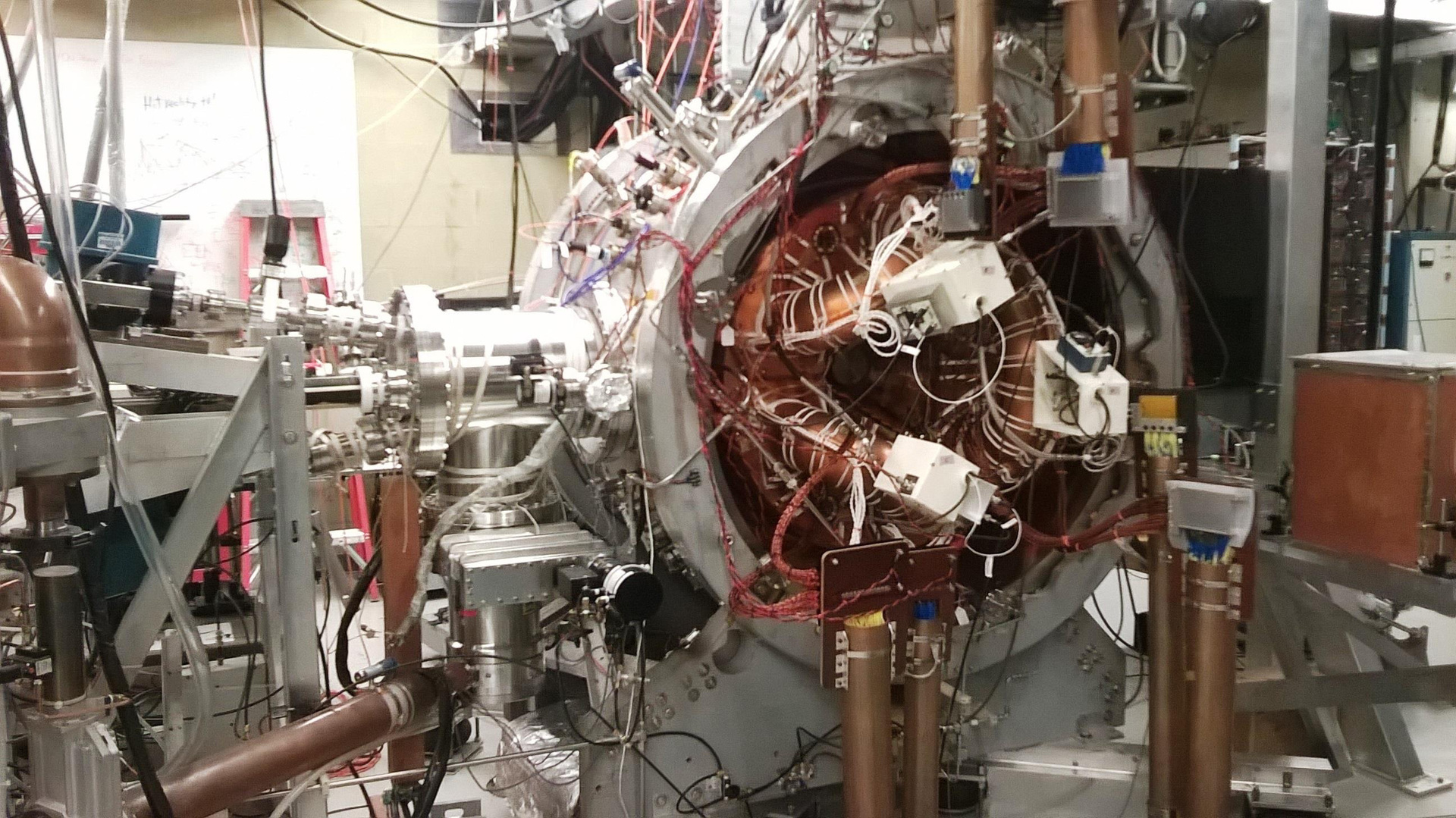New dinomak will make the price of thermonuclear energy below coal
 A team of researchers at the University of Washington led by Thomas Jarbo are developing dinomak (daynomak). According to their latest statements, the reactor will be able to provide energy at a lower cost than that of thermal power plants.
A team of researchers at the University of Washington led by Thomas Jarbo are developing dinomak (daynomak). According to their latest statements, the reactor will be able to provide energy at a lower cost than that of thermal power plants.Compared to other thermonuclear reactors, dinomak can cost ten times less and produce five times more energy. The watt of energy from dinomak will reach the price of watt from coal-fired power plants, but this is possible only with large scale generation.
Specific figures are called: a gigawatt thermonuclear reactor will cost $ 2.7 billion, while coal plants of comparable capacity will take 2.8 billion. Of course, these are just theoretical calculations. Researchers have significantly improved the design, and if they receive the necessary funding, the construction of the reactor is quite possible.
Tokamaks look like empty toroidal vacuum cavities, the walls of which are lined with heat-resistant metals or ceramics. Outside the chamber are massive superconducting magnets that produce toroidal magnetic fields that hold the plasma at a temperature of millions of degrees.
')
The dinomak proposed by the University of Washington is a further development of the spheromak, a tokamak variant. The most important change is that spheromak does not inherit expensive and needing cooling to achieve superconductivity tokamak magnets, but generates magnetic fields by passing electrical currents through the plasma itself.
As a graduate student at Washington University Derek Sutherland says, this is a difficult task. In order for everything to work, you need not only an understanding of the complex physical processes of plasma behavior, but also an effective way of conducting current. It is easy to divert all the energy produced by the reactor back into the plasma. Such a power plant is useless because it produces enough energy only for its own needs.
According to Sutherland, in 2012 there was a big breakthrough, then a new method of plasma confinement was discovered. As a result, various techniques can achieve better than ever before, the efficiency of the passage of current through the plasma and a stable state of synthesis in a relatively small reactor.
 Optimism also suggests that there are not so many differences in the alternative system from the already existing ones. You will also need a smaller magnetic field, which will reduce the price, complexity and size of the reactor - expensive magnets cooled to superconductivity will not be easily protected from the heat of a thermonuclear reaction.
Optimism also suggests that there are not so many differences in the alternative system from the already existing ones. You will also need a smaller magnetic field, which will reduce the price, complexity and size of the reactor - expensive magnets cooled to superconductivity will not be easily protected from the heat of a thermonuclear reaction.Fred Skiff noted that there are some unknown details that need research. It is necessary to check the possibility of maintaining high compression and control of current parameters and plasma position.
The current installation of the Thomas Jarbo team is a small HIT-SI3 with three magnets, its size is ten times smaller than future commercial tokamaks. 8-10 million dollars will allow the research team to build HIT-SIX, which will be two times larger than their current installation. HIT-SIX will work with a plasma of several million degrees using megaamperc currents.
The University of Washington believes that the path to the first thermonuclear power station will cost only $ 4 billion, which is insignificant on the scale of other programs. Work is currently underway on ITER , and its original name (International Thermonuclear Experimental Reactor) best reflects the essence: the United States, Russia, the EU countries, China, India, Japan and South Korea take part in the project. The cost of the ITER program is $ 50 billion.
Thermonuclear energy is cleaner than the heat of burning minerals, but, unlike solar and wind energy, it is stable and does not depend on weather conditions. In the foreseeable future there will be no shortage of fuel for fusion reactors.
There is only one problem: for all the years of research, it has not been possible to force thermonuclear energy to serve peaceful purposes. Work is underway: in October, Lockheed Martin promised a 100-megawatt compact reactor so that it can be transported by truck. In June, Lawrenceville Plasma Physics raised money with Indiegogo to study the alternative reaction of the fusion of a proton and a boron atom. Helion Energy is engaged in a reactor that operates using magnetic compression, and General Fusion is developing a reactor with acoustic waves in a liquid metal.
Based on IEEE Spectrum . doi: 10.1016 / j.fusengdes.2014.03.072 .
Source: https://habr.com/ru/post/363571/
All Articles